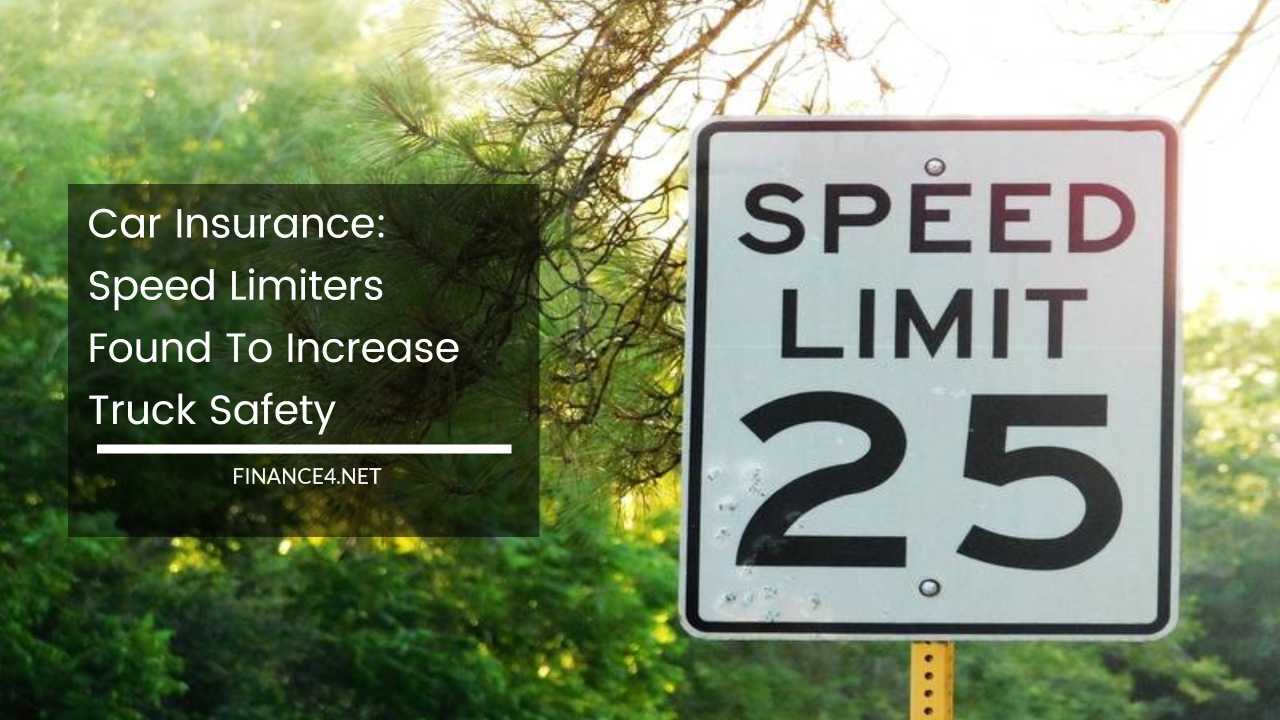Car Insurance: How Speed Limiters are Revolutionizing Truck Safety

Car Insurance: Speed Limiters – A Collaborative Effort for a Revolution in Truck Safety
The Looming Shadow of Truck Accidents: A Call for Change
The sight of a colossal eighteen-wheeler thundering down the highway can be both awe-inspiring and unnerving. While trucks are the backbone of the American economy, the potential for devastating accidents casts a long shadow.
Fortunately, a recent study by the Federal Motor Carrier Safety Administration (FMCSA) sheds light on a powerful tool with the potential to revolutionize truck safety: speed limiters (SLs).
Unequivocal Evidence: Speed Limiters Deliver a Safety Windfall
The FMCSA study wasn’t a small-scale experiment. It meticulously analyzed the crash history of a staggering 138,000 trucks, meticulously comparing those equipped with SLs to those without.
The results were a resounding endorsement for the technology. Trucks lacking SLs exhibited a significantly higher crash risk, translating to a demonstrably safer environment for all motorists sharing the road.
This wasn’t a solitary finding. Collaborations with the American Transportation Research Institute (ATRI) and the Virginia Tech Transportation Institute (VTTI) yielded similar results.
Trucks with active SLs displayed a marked improvement in safety, with the technology’s impact deemed nothing short of significant.
Beyond Crash Prevention: The Multifaceted Benefits of SLs
The advantages of SLs extend far beyond simply preventing crashes. Even when collisions do occur, the severity is often lessened thanks to the power of speed reduction.
Speed is a critical factor in determining the force of impact. By reducing truck speeds, SLs contribute to a decrease in the kinetic energy released during a crash, minimizing potential damage and mitigating the catastrophic consequences often associated with truck accidents.
The benefits extend beyond safety and into the realm of economics for trucking companies. By limiting top speeds, SLs promote increased engine and brake life, while also reducing tire wear.
This translates to lower maintenance costs for fleet owners, leading to a more efficient and cost-effective trucking industry.
Addressing Concerns: Are SLs Flawless?
While the evidence overwhelmingly supports SLs, some raise concerns about situations where exceeding the set speed might be necessary.
Traffic congestion and the need to pass slower vehicles are often cited examples. Additionally, some worry about a significant speed differential between trucks and cars, potentially leading to frustration and risky maneuvers by impatient drivers.
These are valid considerations. However, it’s important to weigh the potential drawbacks against the substantial safety gains. Modern SLs often allow for temporary speed increases under specific circumstances, such as safely passing slower vehicles on multi-lane highways.
Additionally, the vast majority of crashes are not caused by the need to overtake slower vehicles, but by speeding or driving too fast for conditions.
The Road to Legislation: Paving the Way for a Safer Tomorrow
The positive impact of SLs has not gone unnoticed by industry leaders. The American Trucking Association (ATA), a key advocate for the study, strongly supports nationwide legislation mandating reasonable speed limits for trucks (around 65 mph). Studies like the FMCSA’s provide valuable data to support such initiatives.
The Genesis of the Study: Why Speed Matters
The ATA’s call for the study stemmed from a crucial understanding: speed is a major factor in truck accidents.
According to the research, exceeding posted speed limits or driving too fast for road conditions contributes to a significant portion of large truck crashes – a staggering 8% and 23% respectively.
Beyond Technology: The Human Factor in Truck Safety
While SLs are a powerful safety tool, it’s crucial to remember they are not a standalone solution. Proper driver training and safe driving habits remain paramount. Factors like driver fatigue, distraction, and substance abuse can still contribute to accidents.
The Power of Collaboration: A Multi-Faceted Approach
The research on speed limiters is a testament to the power of collaboration between government agencies like the FMCSA, research institutions like ATRI and VTTI, and industry leaders like the ATA. By working together, we can continue to develop and implement safety measures that make our roads safer for everyone.
The Role of Law Enforcement: Enforcing Speed Limits and Safe Driving Practices
Law enforcement plays a crucial role in ensuring the effectiveness of speed limiters. Consistent enforcement of speed limits for all vehicles, including trucks, is essential.
Additionally, initiatives promoting safe driving practices for both truck drivers and car drivers can further contribute to a safer driving environment.
Emerging Technologies: The Future of Truck Safety
Speed limiters represent a significant step forward, but the future of truck safety holds even more promise. Technologies like lane departure warnings, collision avoidance systems, and autonomous emergency braking are being actively developed and implemented.
These advancements, coupled with widespread adoption of SLs, have the potential to dramatically reduce truck accidents in the years to come.
The Financial Impact: The Role of Car Insurance
While advancements in technology and legislation hold immense promise for a safer future, accidents, unfortunately, cannot be entirely eliminated.
This underscores the importance of comprehensive car insurance for all motorists, regardless of the vehicle they drive.
Understanding Car Insurance Coverage
Car insurance serves as a financial safety net in the event of an accident. Depending on the policy you choose, it can cover a variety of expenses, including:
- Property damage: This covers repairs to your own vehicle, as well as damage caused to other vehicles or property in an accident.
- Liability: This covers medical expenses and other damages sustained by others involved in an accident you cause.
- Collision: This covers repairs to your own vehicle, regardless of who is at fault in the accident.
- Comprehensive: This covers damage to your vehicle caused by events other than collisions, such as theft, fire, vandalism, or natural disasters.
Finding the Right Coverage: Tailoring Your Insurance Needs
The cost of car insurance varies depending on several factors, including your driving record, the type of vehicle you drive, your age, location, and the level of coverage you choose.
By comparing car insurance quotes from different providers, you can find an affordable policy that meets your individual needs.
The Shared Responsibility: Truck Safety and Public Perception
While the trucking industry is actively embracing safety measures like speed limiters, public perception often lags behind advancements.
Spreading awareness about the positive impact of SLs can help foster a more positive image of the trucking industry and encourage responsible driving behavior by all motorists who share the road with large trucks.
The Road Ahead: A Collaborative Effort for a Safer Future
The research on speed limiters is a testament to the power of collaboration between government agencies, research institutions, industry leaders, and law enforcement.
By working together, we can continue to develop and implement safety measures that make our roads safer for everyone. This collaborative effort extends to fostering a culture of safe driving practices among all motorists.
Final Thoughts: A Brighter Future for Our Roads
The widespread adoption of speed limiters, coupled with advancements in technology, stricter enforcement of traffic laws, and a focus on safe driving practices, paves the way for a future with fewer truck accidents and a significant reduction in road fatalities.
While car insurance remains a necessity for financial protection, advancements in truck safety bring us closer to a future where the rumble of a large truck is less a cause for concern and more a symbol of the essential role the trucking industry plays in our economy.



